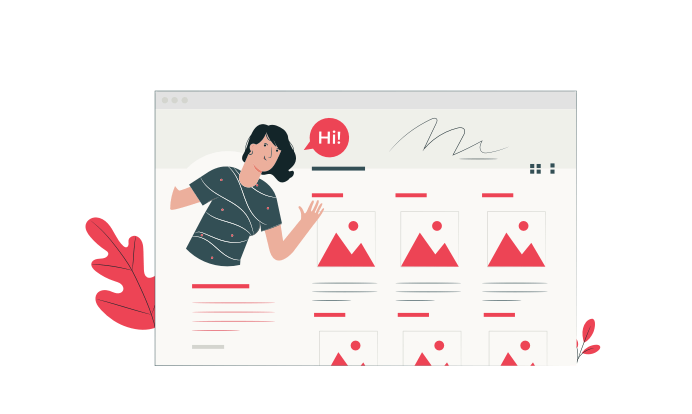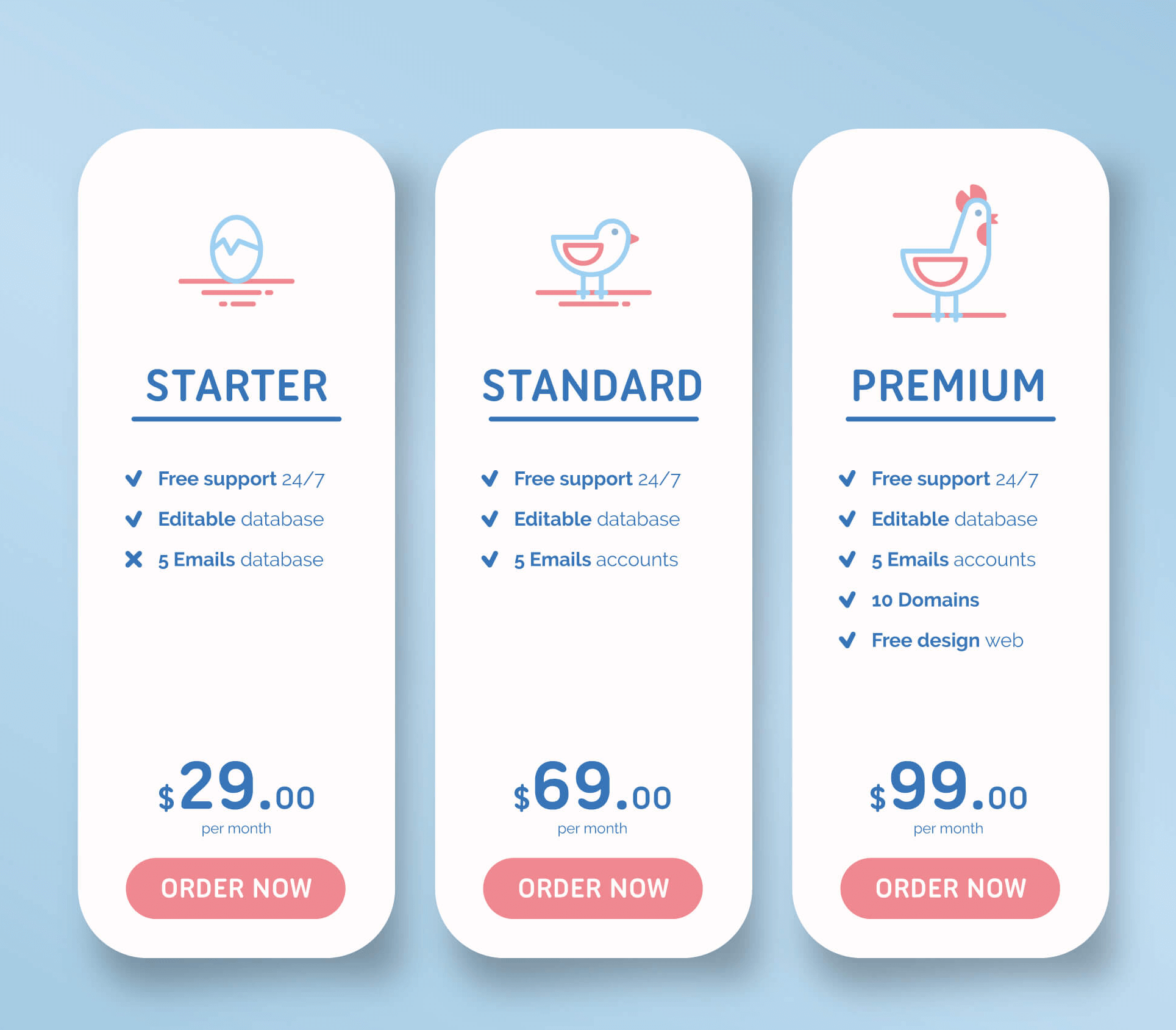What type of Qualitative UX research method should I use?

Nearly all experiments would benefit from multiple research methods and from combining insights. But when would you opt for a quantitative rather than a qualitative UX research method and vice versa? Behavioral research methods are quantitative provide insights into what people do and include clickstream, eye tracking, moderated and unmoderated studies. On the other hand, attitudinal research methods like card sorting, diary studies and concept testing are qualitative can give you data on what individuals say. But both types of research methods work as a team to build the foundations of your product.
Qualitative user research methods aim to collect information that will describe a topic rather than measure it. It allows you to divulge deeper into a topic to gain an understanding of an individual’s motivations, thinking and attitudes. But once you have dived so far into human needs and emotions, in relation to your product, what exactly to you do with this research? How can you make sense of is? This is where quantitative UX research methods come in as it can draw out the conclusions or the facts from your research. It can help you to form the problems or opportunities your customers are facing and validate real problems as opposed to perceived problems. In this guide, we will be focusing on the benefits of qualitative user research methods and how to choose the qualitative research method that is right for you.

Moderated interviews
A moderated study will involve interviewing participants and asking them questions either online or in person within a real-time environment. This type of qualitative UX research study also includes a real person on had to facilitate your test. This individual will work directly with your test participants to be their guide throughout the study if they have any questions or challenges during the test. Think of this person as the sensei of your soon to be product this study can be conducted remotely or in-person, depending on your needs.
If you are looking to test a complicated process or concept in addition to a prototype with a limited functionality, a moderated testing study would be perfect for you as it allows a high level of interaction between the participants and you. The conversation with participants would flow better during this type of study as you could also observe their body language and uncover more about their pain points. All in all, your business could receive more candid feedback about your product/service from a moderated interview.

Unmoderated research methods
As opposed to a moderated interview, an unmoderated study is not monitored or guided, meaning that all participants can complete tasks and answer any questions within their own time, pace and location. If you are looking for quicker qualitative research results, this method is faster as participants can complete the test without causing any disruption to your business. This also means that the cost is lower than a moderated study and you can choose to run more tests with a larger variety of participants.
Unmoderated research methods should be used by businesses throughout the product lifecycle, even at post- launch. Participants can review your prototype, concept or website by recording their screen as well as their voice by speaking their thoughts out aloud. Your business will start this process by using software to send all participants a link to this website, concept or prototype. The relevant software will then instruct the participants to complete a set of tasks. PlaybookUX has an artificial intelligence (AI) function, built into our software, that automatically collects the most important results from every unmoderated participant video so that you do not have to waste time watching the full video. This means that you can get on with more important aspects of your business.

Card sorting
Do you want to understand how your customers understand and sort through in information? If you use the research technique of card sorting, you can improve parts of your website by discovering exactly how your customers expect to see this information structured on your website. It involves creating a set of cards, each of which represent a concept or item that you then ask participants to group in a way that makes sense to them. You could organise an open card sort which involves participants sorting cards in categories that appeal to them and then labelling these categories themselves or a closed card sort where participants group the cards into categories that you choose for them.
But you could also opt for a hybrid card sort where participants can choose the categories that they sort the cards into. This open sorting technique is best to use if you are still at the stage of generating ideas on how to group and label the information on your website. The closed card technique could be best if you want to find out if your categories are unclear and need fixing. On the other hand, a hybrid card sorting technique will work for you if you want to generate even more ideas in relation to grouping your information or need clarity on some categories you have already thought of. When developing your card sort, you can aim for between 30 to 60 cards. Each should represent a concept or an idea that can be categorised and could contain images with or without text.
After your cards have been created, use PlaybookUX to source participants who you feel represent the demographics of your intended users. These participants could also be moderated and if you are organising an open card sort, aim for around 30 to 50 Participants. If you are organised closed and hybrid card sorts, you will require more participants.
Eyetracking
Wouldn’t you love to know what your customer is thinking even if they don’t say anything? Then eyetracking is the right qualitative user research method for you. It can provide you with insights into how individuals view and interpret visual objects on screen. It can help a business explore unconscious reactions during a usability testing experience. Just by itself, it cannot provide us with a through insight into why individuals behave in a certain way. But when used in conjunction with in-depth interviews, a playback of eyetracking results can reveal interesting points that the individual did not say during a test.
For example, eyetracking can provide a business with metrics on a user’s eye gaze through heat maps in order to understand what areas on the screen were looked at and what wasn’t. It can also provide you with data on the time spent in each section of a website as well as the percentage of users who interacted with certain areas of interest such as the call to action. When used in conjunction with quantitative data, this is one type of qualitative user research method that you can then get a more thorough explanation of a user’s experience.

Diary studies
Diary studies are a log of habits, behaviours and activities that a person documents over a period. It is a qualitative user research methods study that can be continued for any length of time. It can be days or months and depends on what you are investigating. This is useful, as business, if you want to understand your customer’s daily experiences over a period. To begin, you need to recruit and screen participants. You would conduct a diary study after a moderated, contextual or ethnographic study with your target customers. For example, you could monitor an individual’s use of sales software by asking participants to record the activities that they do through written and picture form. During this diary study, it is also useful to send reminder emails to check if there are any questions that need to be answered. You would also need to check what they have done so far so you can ensure that the right information is captured.
After their last log of information, you could have a debriefing session that allows you to ask participants questions and clear up any questions you have about the recorded information. It could also give you the opportunity to clear up in gaps in the participant’s notes. Diary studies are a complex type of qualitative UX research method as there are a lot of logs to go through. Your goal, when using this type of study is to decipher any patterns of insights from a participant’s notes/behaviour. Compared to moderated and unmoderated studies, diary studies are one type of qualitative UX research methods that are more effective when asking participants about the details of their day-to-day role. As logs are carried out throughout the day, the researcher is given a full picture. On the other hand, diary studies, liked moderated interviews but unlike unmoderated studies, are prone to bias.

Clickstream
If you are wondering which one of the qualitative UX research methods is best to use when identifying how a user navigates through your website, try a clickstream test. Which way do they go to get the information they need? This qualitative UX research method can show the page that an individual first arrived on, how it was then looked at, how long they stayed for and provides you with a time stamp of when they left. A clickstream analytical study involves analysing this website data. This process gives you an understanding of a customer’s behaviours and habits and in this way, you can determine any weaknesses or pain points of your website.
For instance, if you notice that any customer is leaving a page more quickly than they should, you might want to change the colour or text on the page to improve conversions. Clickstreams are normally used by ecommerce websites to determine the pages that a shopper normally visits, stays on and what they normally put in their cart at the end. But this qualitative user research method cannot provide you with a reason why a customer performed a certain action which means that it needs to be used with another qualitative UX method, such as a moderated or unmoderated study, to make it more useful.
A/B Testing
Also known as split testing, A/B testing is where you compare two versions of a design to see which one performs better. This allows you to create an experiment where you send the two versions to two different sets of users and then look at which one performs the goal. It is one process that, if used, aims to improve usability and conversion over time. It is an ideal research method to use if you are looking to make small changes in order to make your current solution better. It works best if you have a single goal to test and not make too many changes at once. For example, if you wanted to improve the conversions to a paid service on an app, you would make this your only testing focus so that you could experiment with the colour, text or placement of the sign up for the paid service.
If you want to test more than one variable at a time, it stops being an AB test and becomes a multiple variant test. You also need to look at how a variable is currently performing so you can set a benchmark from which to improve on. Following this create two variations of your design. If you are working on improving your call to action, as a variable, try only changing the font used at first rather than everything associated with the call to action. Once your test is live, you will need to assign participants to either a control or experimental group. If you choose to do a test through a piece of software, this should be able to analyse whether there is a statistical difference between the two designs. AB testing can also be used to test web traffic, conversion rates, bounce rates, cart abandonment and landing pages. If you get at least a 10% success rate, this experiment has been a success. You can also use a moderated or unmoderated test to supplement your AB test so you can understand why your customers or participants performed a certain action.
What do you want to test?
Now that you know about the various types of qualitative UX research methods available to your business, how would you choose the right method that is suitable for you?

Concepts
Is there a market fit for a new concept that you wish to test? Whether you are looking to incorporate a new feature into your product or move into a completely new market, you need to make sure that this new concept/idea meets the needs of new and existing customers. A moderated interview is one type of qualitative UX research method that makes it easier to test a concept or idea before you build anything to find out more about your customers daily frustration’s and pain points. Does your new feature aim to tackle this? Does your move to a new market aim to solve a need? If not, look at how you can make sure this happens by asking test questions that aim to find out how important it is to find a solution to a specific customer problem.
While PlaybookUX has user testing templates for every type of situation, we also offer a UX professional services package where we can do the research, gather relevant participants and set the test questions or tasks for your participants. And that’s not all. If you ask us to do all of this for you, we provide you within even more detailed insights and quotes from participants that can continued to be used for various product cycles for your business.

Prototypes, designs
The unmoderated study is best BUT if you’re testing a complex topic, opt for moderated – Test and compare multiple logos to see which one works best for your business. Creating a prototype or design testing survey questions will help you understand which prototype or design best signifies your brand and whether your customers would recognise you, if they were to see this prototype or design. Running this test as an unmoderated study would allow you to see participants speaking their thoughts out loud while comparing two sets of prototypes or designs. The types of qualitative user research method questions you could create for your unmoderated or moderated study (if you are interested in testing a more complex prototype or design) could relate to how visually appealing it is and whether it is memorable. You would also need to add one final question that asks participants which of the prototypes or designs they prefer and why.
Testing a prototype before releasing a new product can save your business a lot of time and money. A product that is poorly designed won’t help anyone. PlaybookUX’s AI solution can provide you with meaningful user insights from the research that you just conducted with us. In this way, your business decisions can be based on real data rather that uninformed assumptions.
Navigation structure
Isn’t it annoying when you cannot find what you are looking for on a website, even if you have looked for a long time? If customers are forced to do the same and cannot achieve their goal such as placing an order for an item they need, they will leave. You can stop them leaving by using website menu navigation questions to transform your website into technology that is more intuitive. This type of intuition can not only improve customer satisfaction but can also reduce bounce rate, increase conversions and remove the need for further customer support assistance.
By using the qualitative research method of card sorting, you could ask participants questions that aim to find how easy it was to find an item and how they would improve the process of trying to find this item on your website. After this card sorting exercise, you could continue testing through a moderated or unmoderated study with PlaybookUX. When you pay a standard price for any of moderated or unmoderated qualitative UX research method with us, you do not pay any extra for participant incentives or participants in general. You only get charged the price stated on our website and nothing more as we wouldn’t want you to get any nasty surprises later.
Competitor Website / Branding Analysis:
How does your brand compare against a competitor on the market? Use PlaybookUX’s competitor analysis questions template to get real time reactions form participants on your brand as they compare your brand to a competitor.
Running an unmoderated study to conduct this qualitative UX research method analysis will allow you to decipher the areas in which your competitor doing well and how you can change certain aspects of your business so you can beat them in this area.
This type of qualitative user research method study can be even more effective if you get to choose participants who are decision makers in that field, which PlaybookUX’s software allows you to do. You would need to prepare two sets of questions; one for the competitor’s company and one for yours. These questions could include asking customers for three words that they would use to describe your company and your competitors. Once this is done you could also ask why so that you could divulge deeper into their responses. In addition, your business could use a variety of administrators to manage this unmoderated study and we would never charge you more for this. This is because we want to encourage everyone within your business to be involved in this process.

AB Testing
AB testing can be quantitative or qualitative so that they can give you the ‘what’ and the ‘why’ of your experiment .If you want to create two design prototypes of a landing page or a website, PlaybookUX’s AB testing template questions can help you improve customer satisfaction by helping you understand why participants prefer one design over the other. You could ask questions that push participants to give their opinions about their initial impressions about both designs, what they like or dislike and what they would change to make it better. You could also use our AB testing templates to test how effective your call to actions are.
Choosing an unmoderated study package with PlaybookUX, in this type of qualitative UX research method would still give you value for money. This is because of the service that PlaybookUX can offer, behind the scenes, when you choose this option. We email you when a video comes in, can provide you with lifetime access to all videos as well as a transcript for each video. You can also save time and money producing analysing the initial data as we do this for you but producing a chart of participants who gave a negative response to your questions and those who did not. Your dashboard will also contain the top quotes from individuals so that you can gain an overall understanding of what future customers might think about your product.

First impressions test
Do you want to make sure that any customer views your website in the best possible way when they first land on it? What aspect of your website makes this great impression? Run an unmoderated first impressions test to watch videos of your participants interacting with your website, product or prototype. In this way, this type of qualitative UX research method will allow you to receive real-time reactions from your participants as they look at your website for the first time. If most of the participants views/impressions of your brand do not match up with your business goals, you can use this qualitative data to amend your product, prototype or website. Examples of tasks that you could set for these participants include asking them what they like or dislike about the website and how they would improve it.
What’s confusing? When your business begins or even as it continues to evolve, things might not always make sense. For example, do you know the best name to call your brand? Well if you don’t choose the right one, it could cost you your target customers. The software from PlaybookUX can help you find the best name for your new venture by letting you test as many names as you like through using qualitative user research methods. Set up your names through an unmoderated study and then choose the tasks that you want participants to carry out for that name these tasks could include asking whether it is easy to pronounce the name and whether it reminds the customer of another brand i.e. can you use it to make your target customer only think of your brand?
Can you define the typical buyer for your brand? On the other hand, you might have recently set up a new business area for your company. While you are confident that you know the typical buyer for the other areas of your business, you have no clue as to how you could start to define your target demographic for this new area.
If this is your issue, you need to think about running an unmoderated user persona test with at least 5-10 participants. When you know what the motivations, frustrations and pain points of your typical customer are, you can use these qualitative user research method insights to influence the vibe and the value of your brand. For instance, if your ideal customers favour brands with a more serious feel, yours must have the same vibe. The questions you can draft for this test include asking participants about their favourite brands and what they enjoy doing in their spare time.
Value proposition
Are you sure that you understand how your target customer/demographic views your business? If what they say does not match up with the values of your business, you could consider repositioning /fixing your business at an early stage through a moderated interview. You can also find out why they do not view your company in the way you want them to. These insights can not only be used at an early stage but can also act as a reference point for future business initiatives.
PlaybookUX recommends a moderated test, as a qualitative UX research method, in order to determine your value as a business so that you can ask more detailed questions that could garner better data to analyse and use. You can set tasks with questions that ask participants whether they would recommend your company to others and whether they trust the company. If you choose PlaybookUX’s software to create this moderated interview, it will be important to know that we have experience in asking unbiased questions. Our templates or our professional services package, where we do it all for you, can ensure that any data you receive is in its most useful form.

Marketing copy / promotional content
Unmoderated study – Before creating marketing copy or promotional content to encourage customers to buy your product, wouldn’t it be useful to get an insight into what keywords your customers use when they are trying to search for a solution like yours? A Google search test, as a qualitative UX research method, will help you understand if your keywords are in line with what your target demographic uses.
Insights from this type of unmoderated test could help you amend your meta tags, title tags and keywords so that Google can help target your ideal customers. PlaybookUX can make this process easier for you through our B2B verified tester panel which would allow you, as a business, to use your buyer personas to shape the participants you select for this Google search test. Our software allows you to test participants based on seniority, industry and job role. This means that if you were selling a new type of cat food and wanted to speak to someone who works in the acquisitions department of a large department store, you could. In addition to this feature, you also have the option to draft screener questions that would allow you to exclude certain types of participants from your unmoderated test if they fail to meet certain criteria. For instance, in the previous example, you might want to exclude individuals who have never owned a cat. Setting up this kind of qualitative user research method test involves asking them to navigate to Google and then asking them to perform a search for a specific item. You can then observe their behaviour when searching for an item that is related to your business.
On another note, if you want to test how well as video advertisement could perform, you could combine an unmoderated study together with an eye tracking study so that you could capture all types of conscious and unconscious behaviour.

Pricing
Once you have a pricing model for your business, how can you ensure that it will be appropriate for your preferred type of customer? Using the PlaybookUX software, you could ask a variety of questions and set several different tasks to divulge deeper into your customer’s detailed mind. For example, your qualitative user research method questions could be framed around the different tiers of pricing that your model contains. Your task could also involve asking participants to give their opinion on the layout of your pricing model. You should also aim to produce questions that ask general questions about your pricing structure such as asking a participant to choose which tier, they would go for and why?
Choosing the right type of qualitative user research method will depend on what you want to test as part of your business. Whatever your business needs to test, it is important to focus on testing one variable at a time, so it is clear what your target demographic thinks about that aspect of your business. This guide should have also demonstrated that a range of qualitative and quantitative UX research methods should be a part of every study you do as a business so you can understand all aspects of your customer’s behaviours and quantity that in numbers. PlaybookUX can offer a wealth of experience when it comes to organising moderated and unmoderated studies whether this is through templates, guides, videos or our do-it-all-for-you professional UX service.
Speak to high quality people


